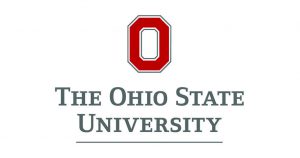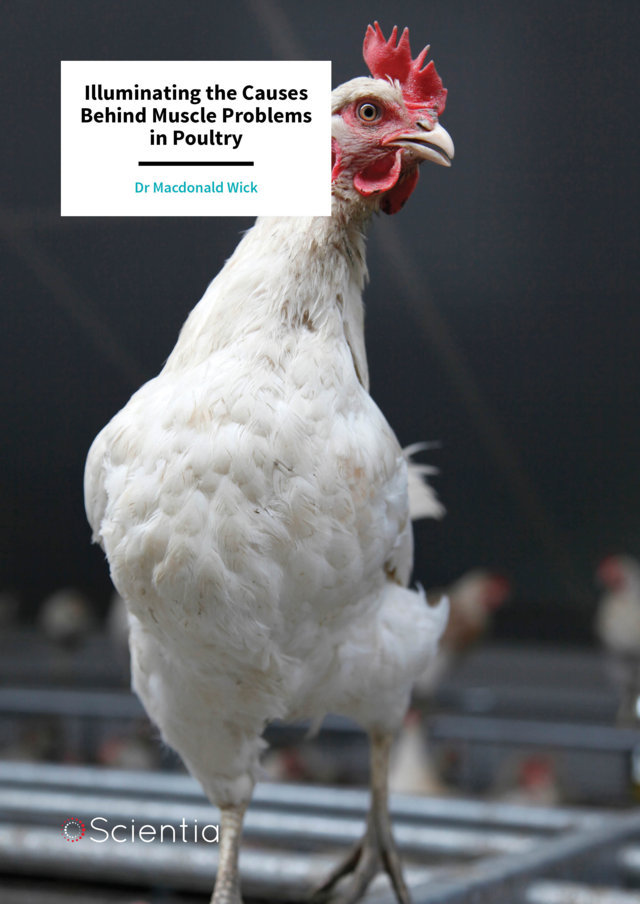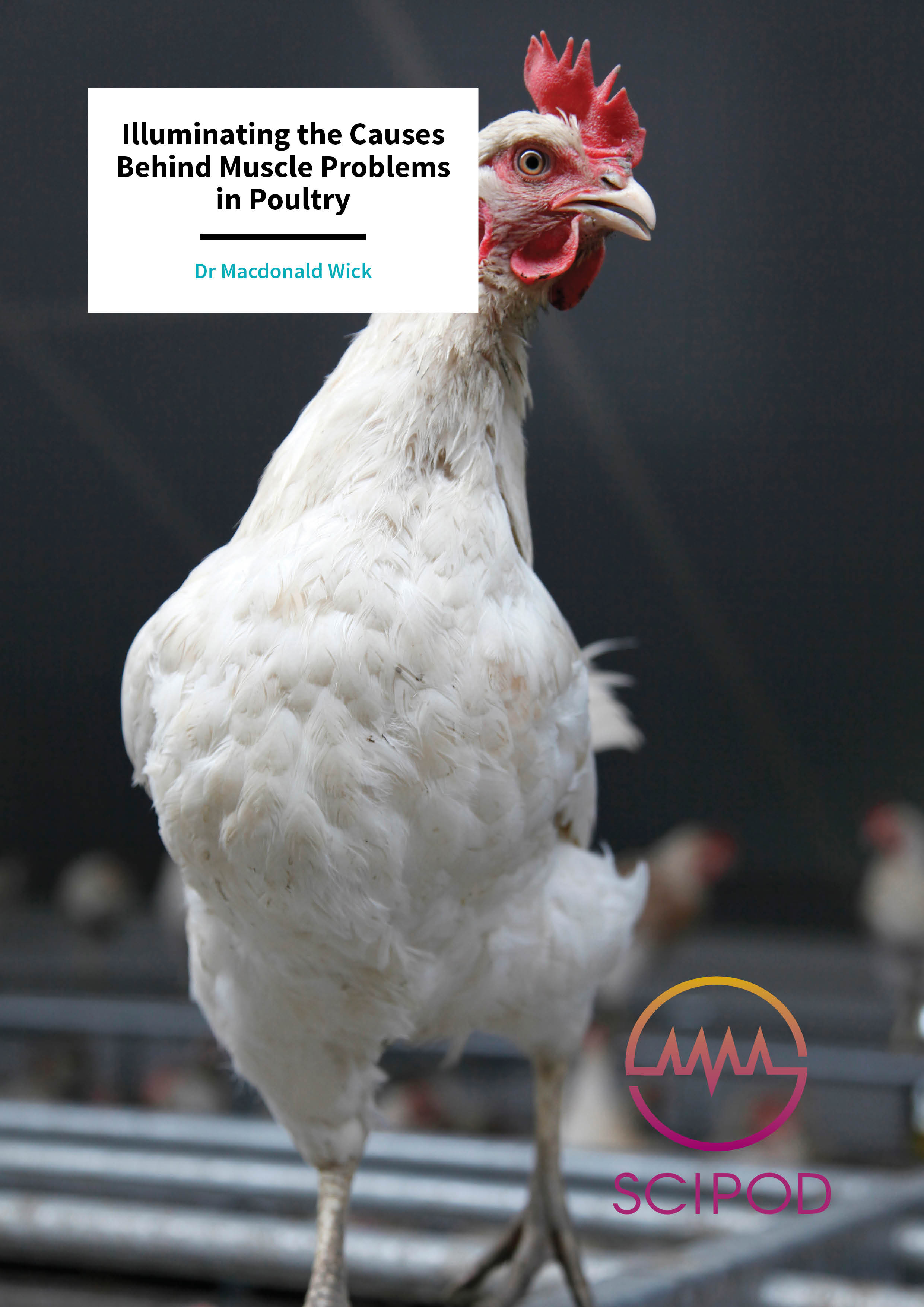Dr Macdonald Wick – Illuminating the Causes Behind Muscle Problems in Poultry
Muscle defects and non-infectious anomalies in commercial poultry are increasing in prevalence – with implications for bird welfare, meat quality and economic value. Dr Macdonald Wick and his team at Ohio State University are attempting to elucidate the biological mechanisms underlying these defects – as well as their genetic and environmental basis.
Poultry meat is now a huge part of our diets in the developed world – chicken for Sunday roasts and midweek meals, turkey for Thanksgiving or Christmas, takeaway fried chicken, not to mention a plethora of processed poultry products. It’s hard to imagine that in our great-grandparents’ day, chicken was an expensive treat reserved for special occasions. During the difficult years of WWII, consumption of chicken boomed in America, and the post-war ‘Chicken of the Future’ contests of the late 1940s were launched by the US poultry industry to ensure that this trend would continue.
This set in motion the decades-long program of commercial poultry production that continues to this day. While this intensification of poultry farming is epitomised with an increase in large poultry production complexes where every aspect of raising the birds is controlled under optimised conditions, perhaps the biggest change is in the birds themselves. Decades of selective breeding has changed the genetics of chickens and turkeys, with poultry breeders selecting for faster growth and ever increasing body weights. This has resulted in the generation of ‘broiler’ chickens – large chickens favoured for meat production – which are distinct from ‘layers’ for egg production.
These innovations in breeding and production have contributed to satisfying our palates with affordable and plentiful poultry, and our demand for poultry continues to grow. In 2016, over 15 million metric tons of broiler meat were consumed in the US, and nearly 90 million tons worldwide, and this is projected to increase even further (https://apps.fas.usda.gov/psdonline/circulars/livestock_poultry.pdf). However, this has not been without costs – both for the birds themselves and consumers.
Poultry, particularly chicken and turkey, is typically considered as ‘white meat’. More specifically, it is the breast and wings that are considered ‘white meat’, while the drumsticks and thigh are regarded as ‘dark meat’ – based on differences in appearance, taste and texture.
These gastronomic distinctions are actually based on the biology of the birds and are largely due to the energy requirements and respiratory oxygen demands of the muscles. The birds’ legs are highly vascularised, composed of ‘slow twitch’ muscle fibres that are rich in mitochondria (the sites of aerobic respiration) and myoglobin (temporary repositories of oxygen), as standing and walking require continuous work for long, sustained periods.
In contrast, the breast is poorly vascularised and is made up of two distinct pectoralis muscles with far less myoglobin – the pectoralis minor or tender and the more prevalent pectoralis major. The pectoralis minor muscles are responsible for raising the wings during flight and the larger more powerful pectoralis major muscles – composed of ‘fast-twitch’ muscle fibres – are needed for pulling the muscles down. The pectoralis major deploys an oxygen free – or ‘anaerobic’ – type of respiration to meet the intense, periodic energy demands of strenuous activity – perfect for flight in the wild ancestors of domesticated poultry but not for the confinement poultry rearing associated with commercial production systems.
Selective breeding for a heavier body weight and increased proportion of breast muscle, or breast yield, has resulted in increased muscle accretion but has taken its toll on muscle quality and the consequential health and welfare of the birds. A worrying, yet not uncommon, bout of breast muscle disorders – or myopathies – have been occurring in commercial broilers and turkeys in recent years. As far back as 1968, muscle myopathies were observed in turkeys, just as confinement poultry rearing was becoming mainstream. In the ensuing decades, these myopathies have become more common, and today, the predominant myopathies observed in broilers are known as ‘white striping’, ‘woody breast’ and ‘pale, soft, exudative’ (PSE) meat. ‘These myopathies present a challenge to both the welfare of the animal as well as economic challenges to the poultry industry,’ says Dr Macdonald Wick, of Ohio State University.
Genetic and Environmental Factors Behind Poultry Myopathies
Since the first reports of muscle myopathies in the 1960s, the underlying physiology and aetiology of these anomalies in poultry, and how to avoid them, have been of great interest to producers, breeders and poultry scientists. Despite the welfare and economic significance, much of the research to date has focused on comparing abnormal and normal tissues from older birds with few studies on the developmental progression of these disorders. Moreover, much of the research to date has been fairly descriptive and often involves histological studies – involving examination of tissues under the microscope. While such studies have been useful, they have provided little insight into how or why poultry muscle disorders develop.
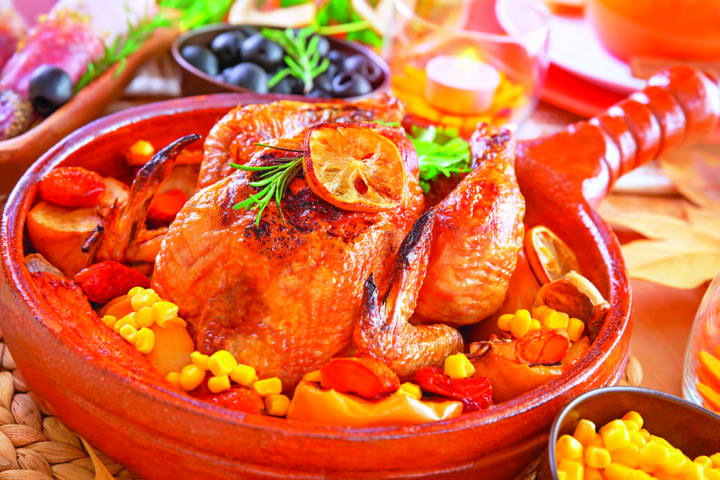
Dr Wick and his research team at Ohio State University are hoping to change this. The team includes Dr Jacqueline Griffin, Dr Mike Lilburn, and statistician Dr Eduardo Luis Ferraz Dias de Moraes – who provides much needed statistical analysis to the team’s studies. Dr Wick’s group aims to elucidate the molecular mechanisms underlying poultry muscle growth and development – using a combination of poultry husbandry, material science approaches for studying meat, biochemical tools – and increasingly, cutting-edge ‘omics’ tools.
‘We hypothesise that temporal changes in these mechanisms are integral to muscle health and post-mortem meat quality,’ says Dr Wick. The team is particularly interested in the various influences – both genetic and environmental – that affect poultry muscle development, as well as the post-slaughter conditions that directly affect meat quality. The team has extensively studied the influence of bird genotype on muscle development – with particular emphasis on meat processing characteristics.
As mentioned earlier, a particular concern for the poultry industry is a meat quality issue known as ‘pale, soft, exudative’ (PSE) meat. While still nutritious, PSE poultry has properties that consumers may regard as aesthetically unappealing, notably reduced water-holding capacity resulting in a dry texture and a reduced propensity for gel formation. PSE meat is also a problem for food processing and preparation, as the loss of moisture during cooking requires repackaging and increased labour costs. Worryingly, it is difficult to differentiate between normal and defective breast tissue immediately after slaughter, and very often this is only apparent after cooking, when meat products appear hard and dry. It is estimated that the incidence of PSE in turkey meat approaches 20%.
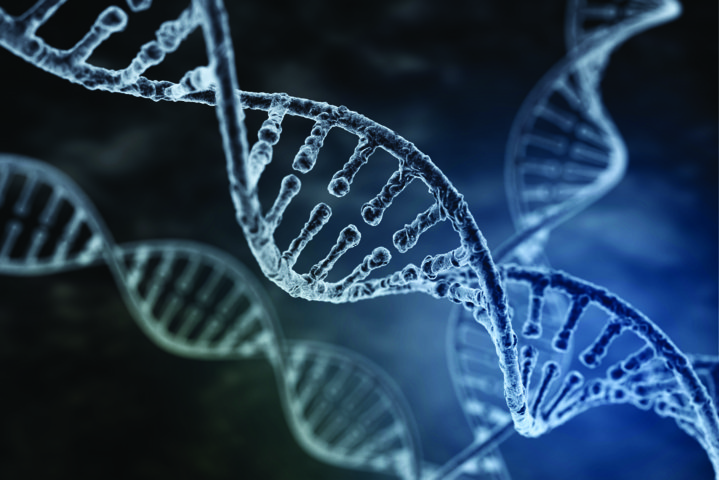
Several factors are thought to influence the development of PSE meat – including genetics, adverse rearing conditions such as heat stress, pre-slaughter anxiety, and post-slaughter pH and heat conditions. The breast muscles still undergo metabolism for a short time after slaughter, and being composed of ‘fast-twitch’ muscle fibres, are capable of undergoing anaerobic respiration after respiration stops. During post-slaughter metabolism, glycogen (the primary carbohydrate energy store) is rapidly broken down into lactic acid in the absence of oxygen, accompanied with a rapid drop in pH. Dr Wick’s team is trying to shed light on this process – and they are particularly interested in how the proteins present (the ‘proteome’) in breast muscle may stimulate or impede this acidification.
The research group has meticulously studied the various factors that lead to PSE meat in turkeys. For these studies, they use breast muscle from turkeys hatched, raised and processed at research farms under carefully controlled conditions with the muscle/meat being subjected to a battery of tests. These studies typically involve comparing breast muscle from three turkey strains – one representing commercial turkeys from the 1960s (RBC2), one selected for body weight (F-line) and a fast-growing commercial strain with enhanced breast muscle yield (C-line). After slaughter at 16 weeks, breast muscle is harvested and the team analyses its water-holding capacity, gel formation, elasticity and biochemistry. The team’s studies have provided insight into the incidence of PSE meat in poultry and found that breeds selected for body weight and breast yield produced breast meat with decreased meat functionality. In particular, the water holding capacity of the C-line breed was significantly less than that of RBC2, with that of the F-line being somewhere between the two (Updike et al., 2006).
It is known that the predominant protein present in breast muscle meat, known as myosin, is a major factor influencing meat gel formation – and thus, may be used as one indicator for PSE meat. Although poultry lines with increased body weight or breast yield are shown to have a greater susceptibility to PSE and other muscle quality issues, studies by the team seem to suggest that levels of myosin are comparable between the different turkey strains. Indeed, one of their studies suggests that other proteins are also involved in gel formation and product quality problems may be due to the balance of various proteins that accompany the growth of pectoralis major muscles.
Notably, Dr Wick’s group found that feeding regimes can affect the expression of neonatal and adult fast skeletal muscle myosin proteins in F-line and RBC2-line young turkeys. These proteins are sequentially expressed and may be indicators of developmental progression in muscle. The turkeys were fed the Ohio State University turkey starter diet, but there was a twist – they were split into two groups – some given unlimited access to food while others were restricted access to food for 30 minutes daily. Subsequently, the birds were euthanised and the group measured the ratios of neonatal and adult myosin in breast meat samples. In F-line and RCB2-line turkeys, proportion of adult fast skeletal muscle myosin protein was significantly higher in those that had unlimited access to food.
‘Transcriptomics’ for Elucidating Myogenesis in the Egg
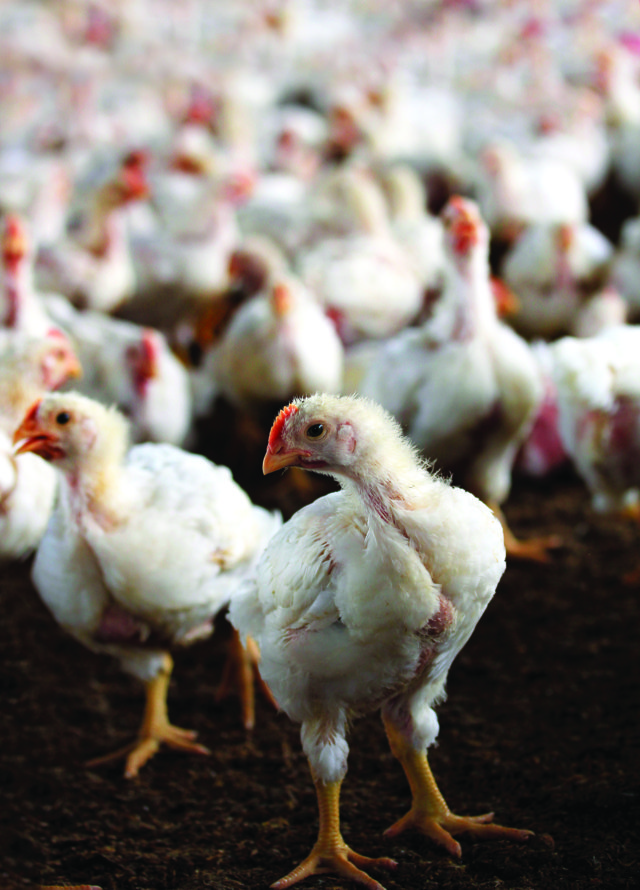
Muscle development – or ‘myogenesis’ – is a complex yet tightly regulated temporal and spatially specific process in poultry that begins with the embryo while still in the egg. Precursors to muscle cells, known as myoblasts, migrate and fuse together to form fibres known as myotubes, which subsequently differentiate into mature muscle fibres.
There are at least six different developmental types of fast myosin, and the expression levels of these different types can be reflective of the embryonic and post-hatch development and myogenesis. Myogenesis doesn’t stop in the egg though! After hatching, myogenesis continues as the muscle cells expand. A recent focus of the Dr Wick’s research has been elucidating the mechanisms behind embryonic myogenesis – a little-understood yet critical stage in meat production. In this line of research, his team is using cutting-edge transcriptomics tools to study the expression of proteins involved in myogenesis, using the temporal expression of the myosin isoforms as a developmental gauge with embryos of the single-comb white leghorn chicken as a model organism and broilers.
The instructions for protein expression are transferred from DNA to mRNA ‘transcripts’ in a process called ‘transcription’ and are subsequently used to build new proteins in a process known as ‘translation’. Using transcriptomics to quantify specific mRNA transcripts, the team can elucidate which transcripts are being expressed, and by how much.
The team is currently validating the use of a transcriptomics platform – NanoString nCounter Transcript Abundance Analysis – to understand embryonic myogenesis on the transcriptional level – with promising preliminary results (Griffin et al. 2016). The researchers compared mRNA transcript levels corresponding to key proteins in embryos of white leghorn chickens with another broiler breed that exhibits partial muscular dystrophy. They found that differences in transcription profiles for myogenesis-related proteins that later dictate muscle fate in hatchlings are already present in the embryo.
With the publication of a novel muscle myopathy staging method (Griffin et al. 2017), the team is validating the transcriptomics platform in the quantification of transcription in broiler chickens every other day post-hatch to elucidate the myogenic signals and proteins associated with the progression of white stripping and woody breast.
Summary and Future Directions
The insatiable demand for inexpensive, affordable poultry meat has pushed chickens and turkeys to their physiological limits – impacting the welfare and muscular health of the birds, as well as the quality of their meat. Dr Wick and his team are unravelling the biological mechanisms behind muscle problems in poultry, and are pioneering ‘omics’-based approaches to illuminate the genetics behind myogenesis and myopathies. Their work will eventually lead to the establishment of biomarkers for future breeding strategies that balance welfare with the economic value of meat products.
Meet the researcher

Dr Macdonald Wick
Department of Animal Sciences
The Ohio State University
Columbus, OH
USA
Dr Macdonald Wick gained his PhD in Agricultural Chemistry at University of California in 1997 after having graduated with a BS in Microbiology at California State Polytechnic University in 1976. He is currently an Associate Professor at the Department of Animal Sciences. A prominent researcher in the field of meat science, Dr Wick’s special interests include muscle growth, the genetic, environmental and postmortem impacts on meat quality and thermally-induced meat gel formation. Over the course of his career, he has received a number of high-profile Research Enhancement Competitive Grants from the Ohio Agricultural Research and Development Center to investigate poultry meat quality and nutritional strategies. Dr Wick is keen to disseminate his research findings to industry, and regularly interacts and collaborates with meat processing companies. He also teaches a number of Animal Science and Meat Science modules for undergraduate students, including Animal Laboratory Techniques and a freshman research seminar series.
CONTACT
E: wick.13@osu.edu
T: 614 292-7516
W: https://ansci.osu.edu/our-people/macdonald-wick
KEY COLLABORATORS
Michael Lilburn, Animal Sciences, Ohio State University
Jacqueline Griffin, Animal Sciences, Ohio State University
Luis Moraes, Animal Sciences, Ohio State University
Dennis Heldman, Food Engineering, Ohio State University
REFERENCES
J Griffin, L Moraes, M Wick and MS Lilburn, Onset of white striping and progression into wooden breast as defined by myopathic changes underlying Pectoralis major growth, Estimation of growth parameters as predictors for stage of myopathy progression, Avian Pathology, 2017. DOI: 10.1080/03079457.2017.1356908
J Griffin, N St-Pierre, MS Lilburn, M Wick, Transcriptional comparison of embryonic myogenesis in Leghorn and Low Score Normal embryos, Poultry Science, 2017, 96, 1531–1543.
J Griffin, MS Lilburn, M Wick, Temporal embryonic transcription of chicken fast skeletal myosin heavy chain isoforms in the single comb white leghorn, Poultry Science, 2016, 95, 1151–1155.
K Huffman, I Zapata, JM Reddish, MS Lilburn, M Wick, Feed restriction delays developmental fast skeletal muscle MyHC isoforms in turkey poults selected for differential growth, Poultry Science, 2012, 91, 3178–3183.
MS Updike, HN Zerby, JC Sawdy, MS Lilburn, G Kaletunc, MP Wick, Proteins associated with thermally-induced gelation of turkey breast meat, Journal of Food Science, 2006, E398–402.
MS Updike, HN Zerby, JC Sawdy, MS Lilburn, G Kaletunc, MP Wick, Turkey breast meat functionality differences among turkeys selected for body weight and/or breast yield, Meat Science, 2005, 71, 706–712.
